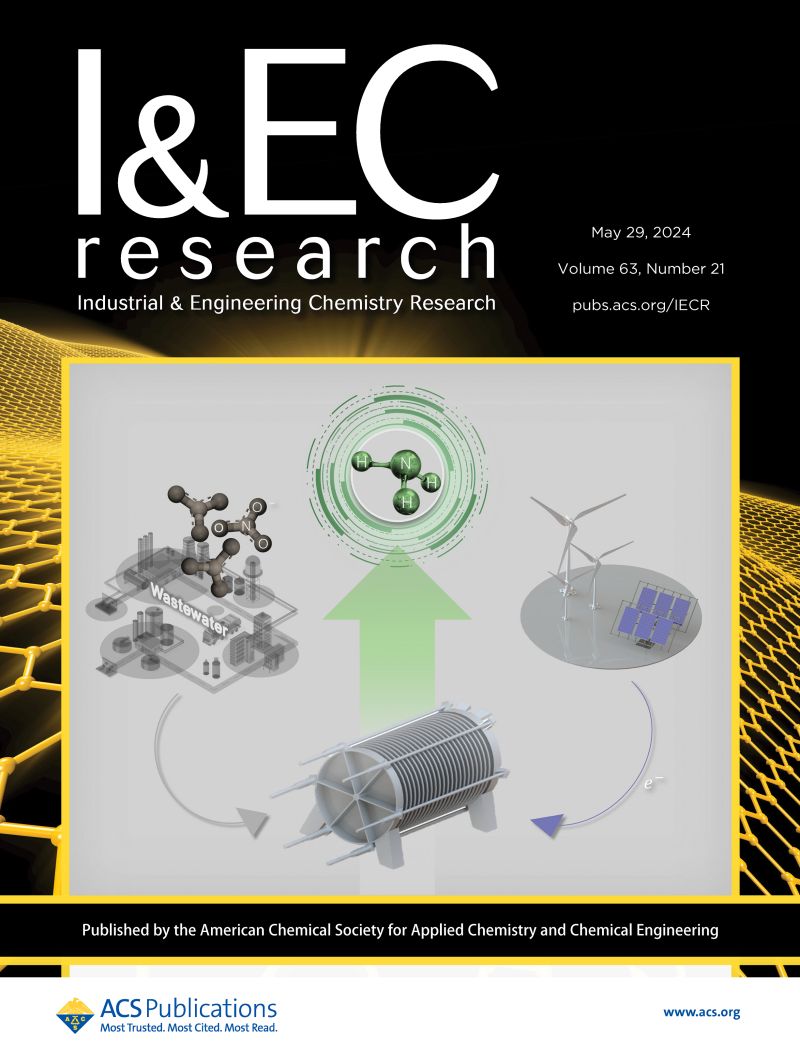MoO2–Stabilized MoS2 Heterojunction Catalyst for Enhanced Lithium–Sulfur Battery
IF 3.9
3区 工程技术
Q2 ENGINEERING, CHEMICAL
引用次数: 0
Abstract
Heterojunction materials are characterized by high design adjustability, which accounts for their wide application in various catalytic fields. In this work, a MoO2–MoS2 heterojunction catalyst with MoO2 serving as a stabilizer was fabricated via the semisulfidation treatment on the surface of carbon nanotube (CNT) and employed as the cathode host material for lithium–sulfur batteries (LSBs). The introduction of MoO2 effectively mitigates the aggregation of MoS2, enabling a rich distribution of active sites. Moreover, it can enhance the redox stability and bring about the antipolarization effect under high current densities, thereby fully unleashing the inherent high catalytic activity of MoS2. This unique heterojunction host material not only accelerates the multistep transformation of lithium polysulfides (LiPSs) and reduces the nucleation energy barrier of Li2S but also demonstrates outstanding stability along with high safety. The assembled Li–S batteries exhibit remarkable cycling stability, with an average decay rate of only 0.05% over 400 cycles at 1 C. Significantly, the pouch cells assembled with a high sulfur loading of 6.4 mg cm–2 and a low E/S ratio of 4 μL mg–1 achieve a high areal capacity of 8 mAh cm–2, which implies broad practical prospects.

增强型锂硫电池用moo2稳定MoS2异质结催化剂
异质结材料具有较高的设计可调节性,在各种催化领域有着广泛的应用。在碳纳米管(CNT)表面进行半硫化处理,制备了以MoO2为稳定剂的MoO2 - mos2异质结催化剂,并将其作为锂硫电池(LSBs)的正极主体材料。MoO2的引入有效地减轻了MoS2的聚集,使活性位点的丰富分布成为可能。并且在高电流密度下,可以增强氧化还原稳定性,产生反极化效应,从而充分发挥MoS2固有的高催化活性。这种独特的异质结主体材料不仅加速了锂多硫化物(LiPSs)的多步转变,降低了Li2S的成核能势垒,而且具有出色的稳定性和高安全性。所制备的锂硫电池具有良好的循环稳定性,在1℃下循环400次,平均衰减率仅为0.05%。高硫负载6.4 mg cm-2、低E/S比4 μL mg - 1的袋形电池具有8 mAh cm-2的高面容量,具有广阔的应用前景。
本文章由计算机程序翻译,如有差异,请以英文原文为准。
求助全文
约1分钟内获得全文
求助全文
来源期刊

Industrial & Engineering Chemistry Research
工程技术-工程:化工
CiteScore
7.40
自引率
7.10%
发文量
1467
审稿时长
2.8 months
期刊介绍:
ndustrial & Engineering Chemistry, with variations in title and format, has been published since 1909 by the American Chemical Society. Industrial & Engineering Chemistry Research is a weekly publication that reports industrial and academic research in the broad fields of applied chemistry and chemical engineering with special focus on fundamentals, processes, and products.
 求助内容:
求助内容: 应助结果提醒方式:
应助结果提醒方式:


